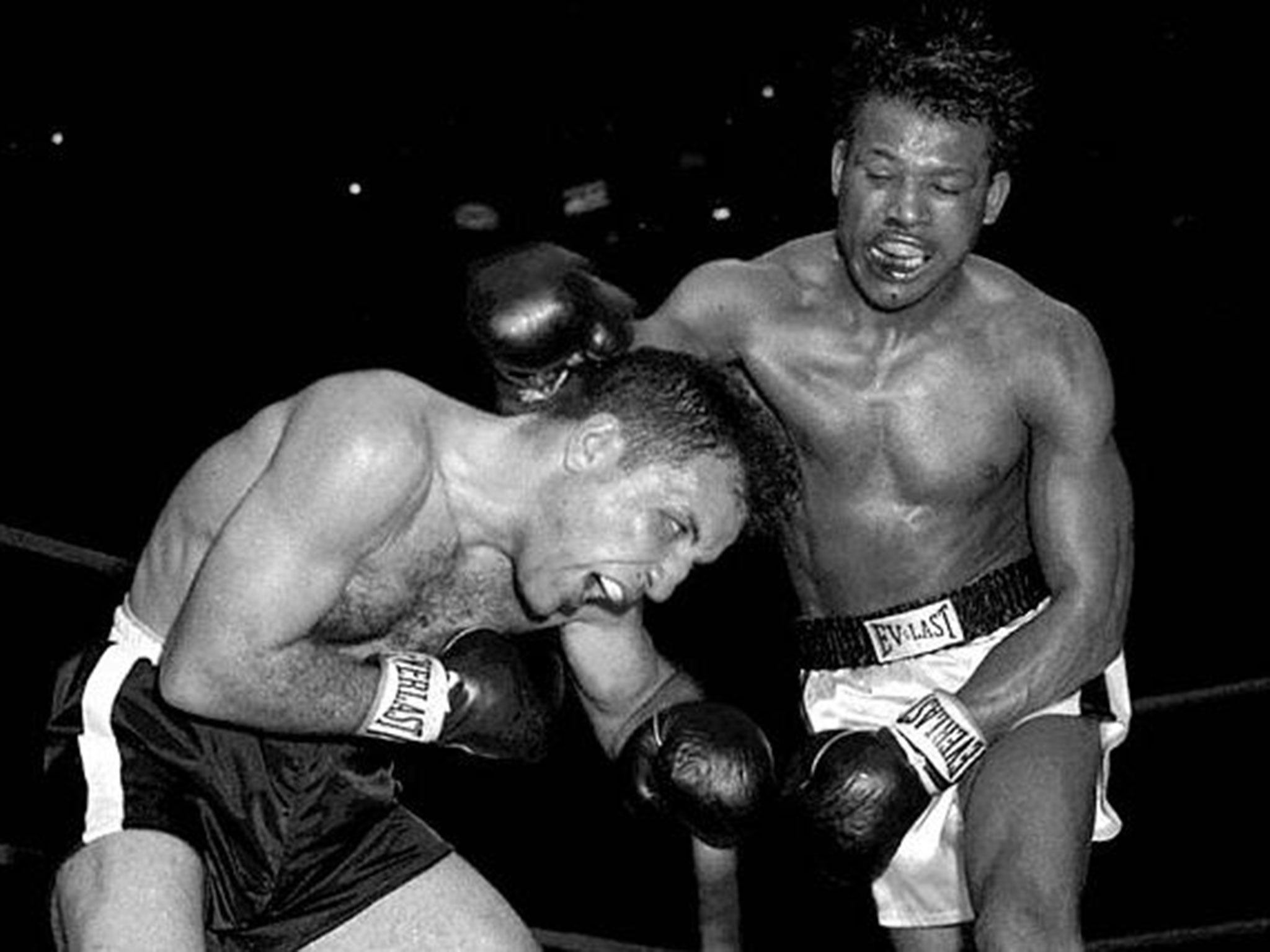Steve Bunce: Sugar Ray Robinson and Jake LaMotta created the perfect ring rivalry
COMMENT: All-time greats did their fighting and talking in the ring

Your support helps us to tell the story
From reproductive rights to climate change to Big Tech, The Independent is on the ground when the story is developing. Whether it's investigating the financials of Elon Musk's pro-Trump PAC or producing our latest documentary, 'The A Word', which shines a light on the American women fighting for reproductive rights, we know how important it is to parse out the facts from the messaging.
At such a critical moment in US history, we need reporters on the ground. Your donation allows us to keep sending journalists to speak to both sides of the story.
The Independent is trusted by Americans across the entire political spectrum. And unlike many other quality news outlets, we choose not to lock Americans out of our reporting and analysis with paywalls. We believe quality journalism should be available to everyone, paid for by those who can afford it.
Your support makes all the difference.It is one of boxing’s great contradictions that its very best fighters, like Sugar Ray Robinson and Jake LaMotta, try so hard to hurt each other in fights that intensify as their familiarity increases.
Robinson beat LaMotta five times in six fights and in many ways they set an impossible standard for rivalries, rematches and savagery in boxing. They also did their fighting and talking inside the ropes.
“I fought Sugar Ray so many times it’s a wonder I didn’t get diabetes,” LaMotta would repeat during the comedy routine he first used to make a few extra dollars during his days running a strip club. As far as I know he still uses it as part of his routine, which was made famous by Robert De Niro in the Raging Bull movie.
In their last fight, which took place in 1951 and is now known as the “St Valentine’s Day Massacre”, Robinson stopped LaMotta in the 13th round to win the middleweight world title. The action in that fight is often so brutal and the pair push each other to such physical extremes, each staggering like drunks on occasion, that its modern equivalent would bring out the abolitionists. “If the referee had held up another 30 more seconds, Sugar Ray would have collapsed from hitting me,” said LaMotta.
The Robinson and LaMotta fights took place over a nine-year period in rings pitched in America’s best boxing cities during the Forties and Fifties. In 1943 they met for the second time and the score was 1-0 in Robinson’s favour from their opening fight the year before. Robinson was 40 and zero going into that second fight at the Olympia Stadium in Detroit and would win the world welterweight title a couple of years later. LaMotta was bigger, meaner and desperate for revenge; Robinson was saved by the bell in one round and lost on points.
“Every single round with Sugar Ray was hard, every fight was close,” LaMotta said. “No foul blows or nothing when we fought. We stood there toe-to-toe and banged away. He was the real greatest.”
In 2001 I spent a day and night with LaMotta and his seventh wife in New York and even after 50 years he still talked about his true rival with awe.
Their third fight was just 21 days later back at the Olympia Stadium. Robinson was dropped for a nine count in round seven but boxed with skill to win and make the score 2-1 in the series. A break of 21 days between hard fights is absurd by modern standards, but Robinson took another 10-round fight in between, which was a close scrap as he just sneaked a win over California Jackie Wilson.
Robinson was 44 when he finally retired in 1965 after 202 fights. LaMotta was not his only repeat rival but he was his most brutal. “Jake never stopped coming, never stopped throwing punches and never stopped talking,” Robinson said. “We fought so many times, we were close to getting married. But, you know, you hit that guy with everything and he would just act like you are crazy.”
It was never personal with LaMotta and Robinson, never about insults and when their savagery culminated in the unforgettable “Massacre” they had created a very special place in boxing history. They never hated each other, they were just two men struggling to get a living.
This Saturday the first in a fine series of domestic rematches born of fierce rivalries will take place when Nathan Cleverly and Tony Bellew finally meet again; in 2011 Cleverly won their first fight, when one judge gave it to him by five rounds, but Bellew has not stopped chasing Cleverly and in many ways has created the rematch with his relentless declarations that he was robbed. It is a good fight once again.
There is no denying that Cleverly and Bellew this week, and Dereck Chisora and Tyson Fury on the following Saturday, have helped hype their promotions with a long series of indecent clashes. Robinson and LaMotta never had to be rude or make threats to each other to put bums on seats in any of the cities where they traded leather and, I would argue, the British quartet could have held their tongues, talked about proper fights, the significance of rematches and still made their money. The fights will be good and all the swearing, silly claims and stunts will be forgotten.
Join our commenting forum
Join thought-provoking conversations, follow other Independent readers and see their replies
Comments